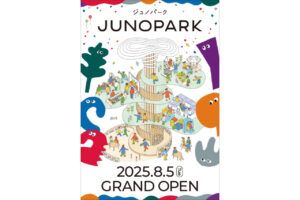
PR
Saigoku Sanjusankosho No. 18Known ashexagonal buildingThe temple's official name is Tingbo-ji Temple. The temple's official name is Tingbo-ji Temple, but this is due to the hexagonal shape of the roof when the main hall is viewed from directly above,In Kyoto, it is affectionately called "Rokkaku-san" or "Rokkakudo.Founded by Prince ShotokuIt is also famous as the birthplace of Ikenobo Ikebana.
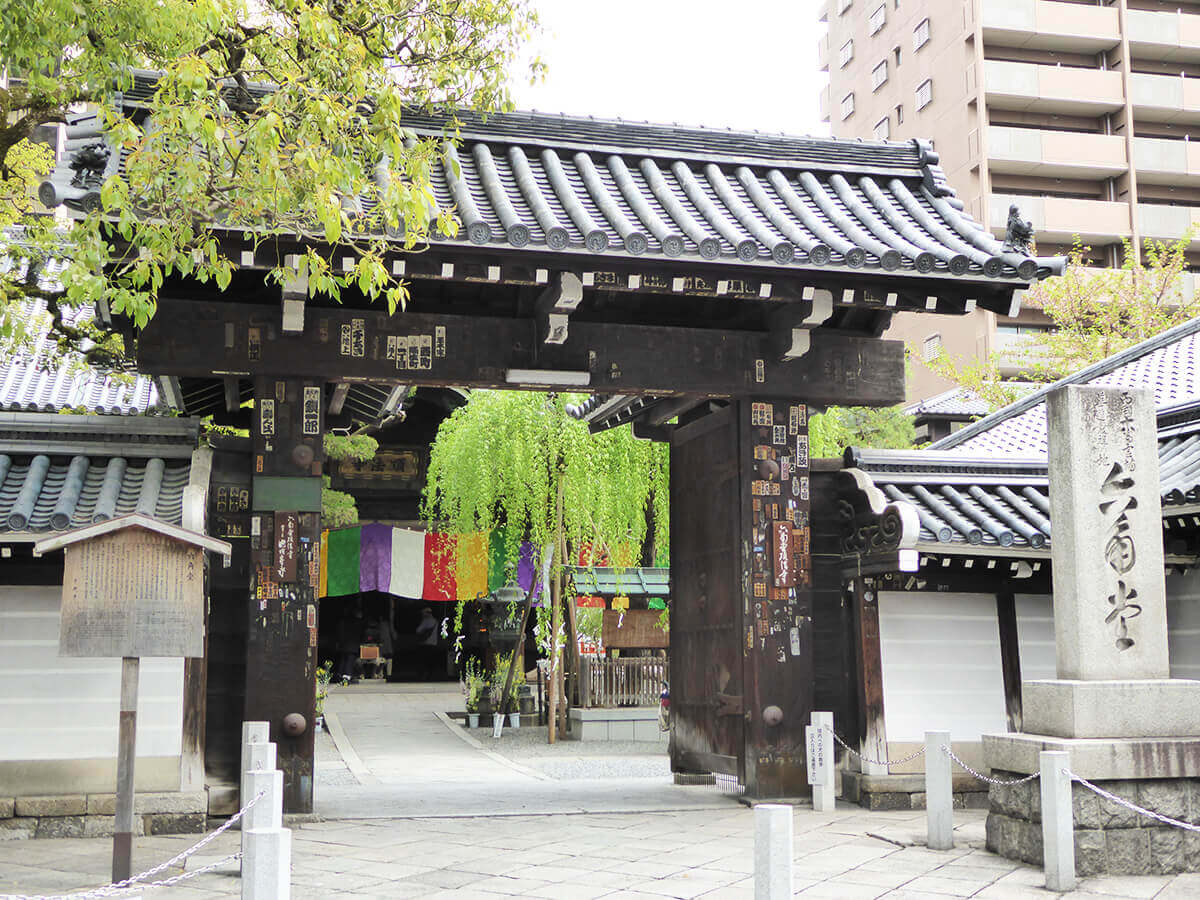
Rokkakudo (Tingho-ji Temple)
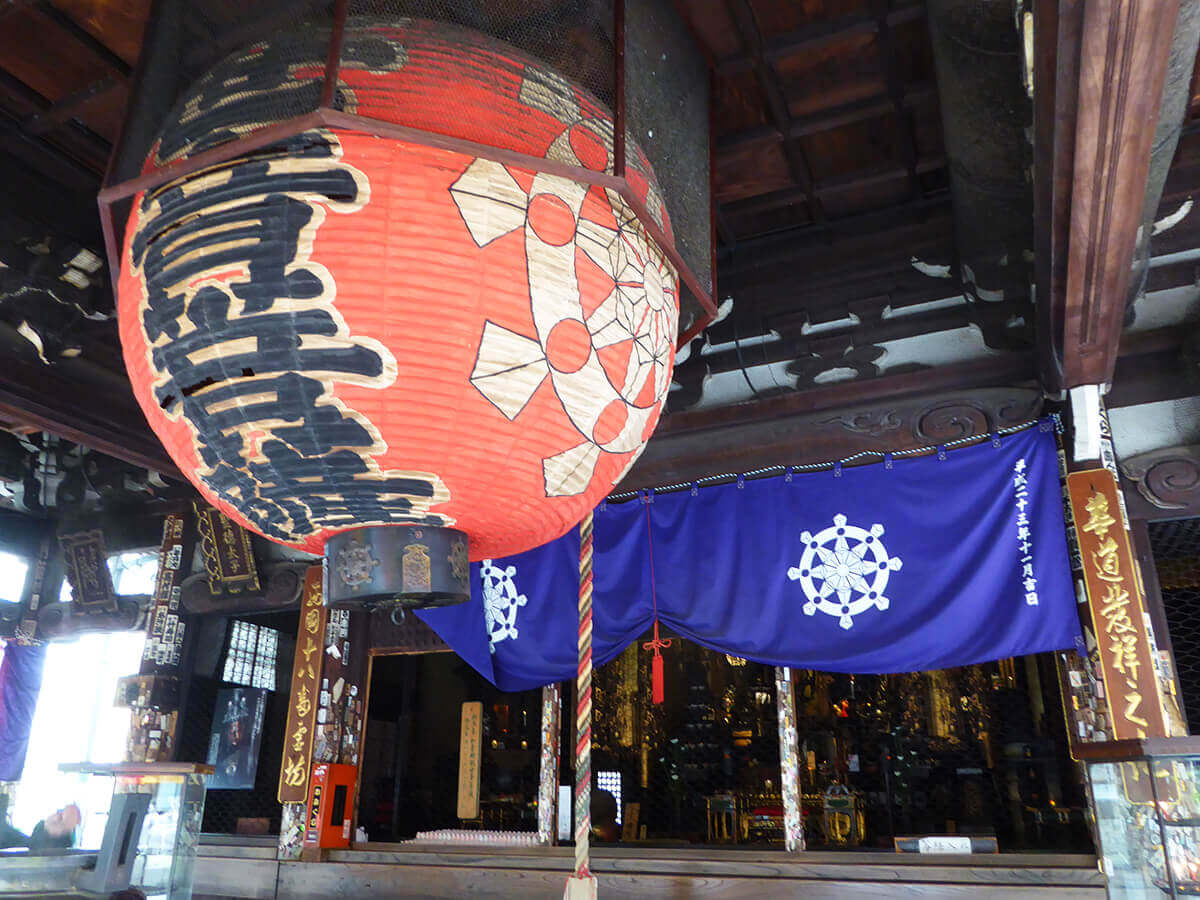
The 33 places in the western part of the country.
Known as the 18th temple of the Kannon Sacred Temple
There was a legend of love in this Rokkakudo.
It was in the early Heian period. Emperor Saga, who was looking for a queen, had a mysterious dream one night. The Nyoirin Kannon (Goddess of Mercy) appeared to him,Look under the willows in Rokkakudo."The emperor sent someone to Rokkakudo. The emperor immediately sent someone to Rokkakudo and found a woman standing under a willow tree in the precincts of the temple who was so beautiful and smelled so good that it was hard to believe that she was from this world. In those days, a woman with a good fragrance was one of the requirements for a beautiful woman. The emperor took her as his consort and favored her.
From the legend,"If you make a wish on the willow tree in Rokkakudo, you will be blessed with a good marriage."in TokyoLove will be fulfilled."Rumors spread,It came to be believed as a place for matchmaking and love.It is common to see omikuji (charms) tied to the willow branches in front of the main hall, and it is said that tying two willow branches together and tying the omikuji to them will bring good luck.
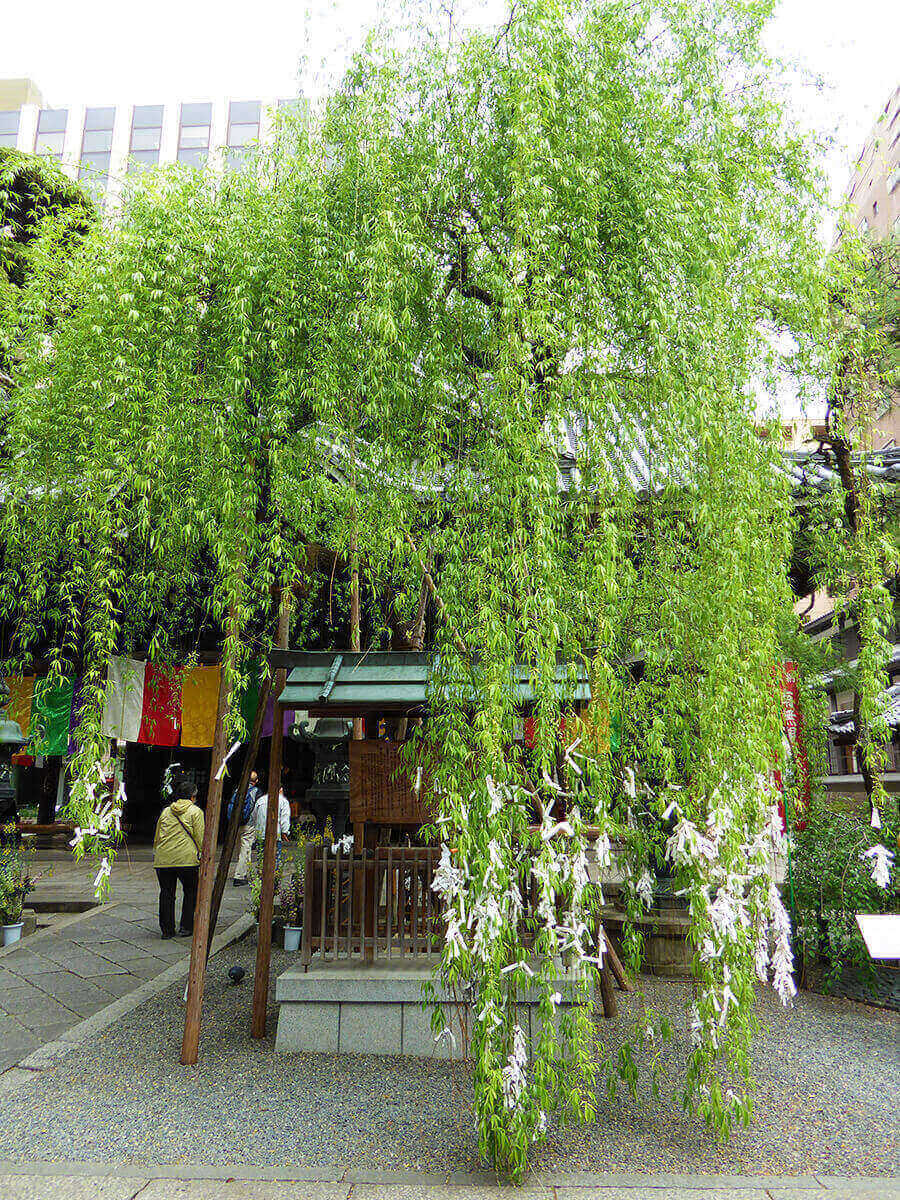
Willow trees related to the marriage legend in the precincts of Rokkakudo
One more thing,In front of the main hall is a hexagonal stone with a round hole in the center.There is."Navel stone."Although it is called,Named for its location in the center of the city of Kyoto.It seems.
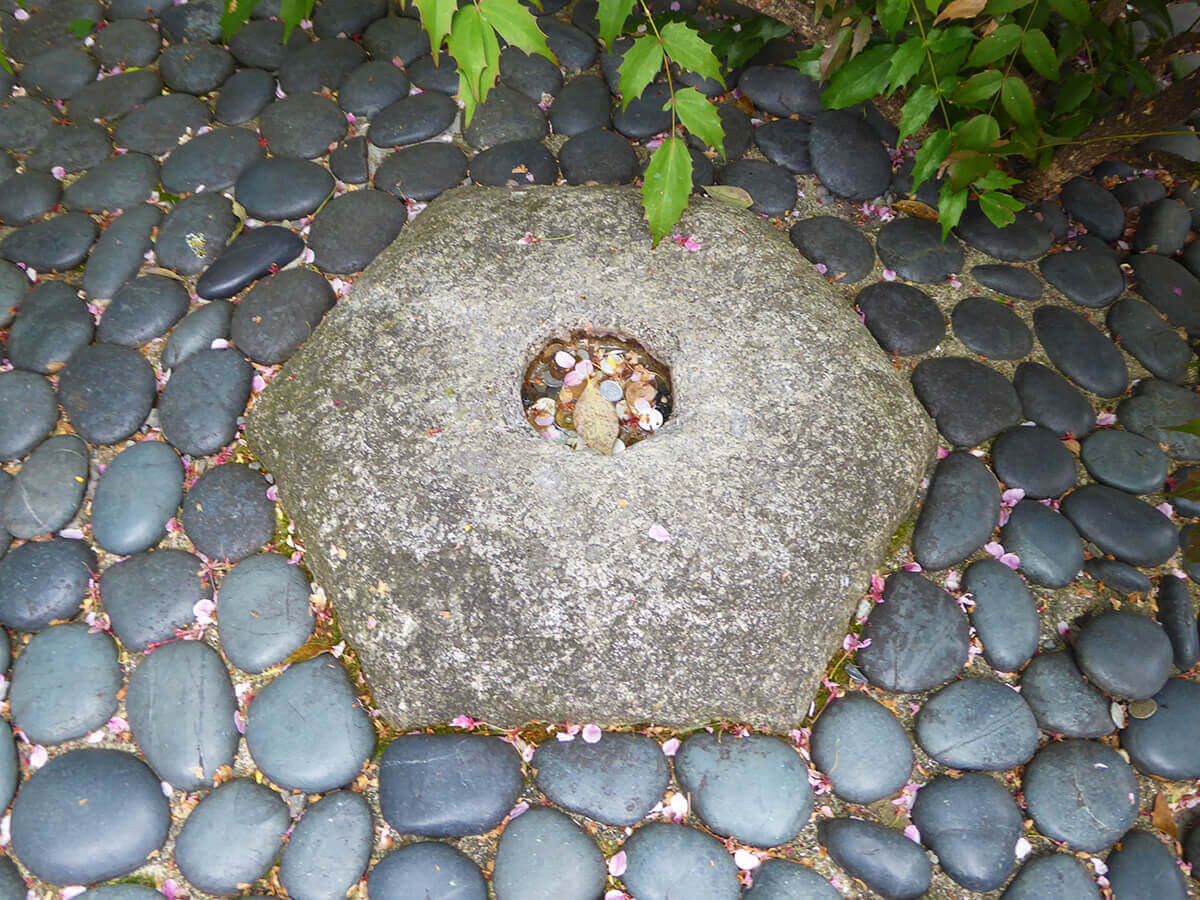
Navel stone" in the precincts of Rokkakudo
Originally located on Rokkaku-dori in front of the temple gateBy,It was moved to the precincts of the temple in the early Meiji period.This stone is where Emperor Kanmu prayed to the main hall, saying "Please move a little" when he was in trouble because a road was to be built through the location of the main hall during the construction of Heian-kyo,Overnight, the main hall was moved about 15 meters north to its current location.That's right. A single cornerstone was left behind. This is the navel stone, which has been handed down to this day and is also called the "stone of the old site of the main hall. In the Edo period's "To Meisho Zue (Illustrations of Famous Places in Tokyo)," the navel stone can be seen in front of the temple gate, not on the temple grounds.
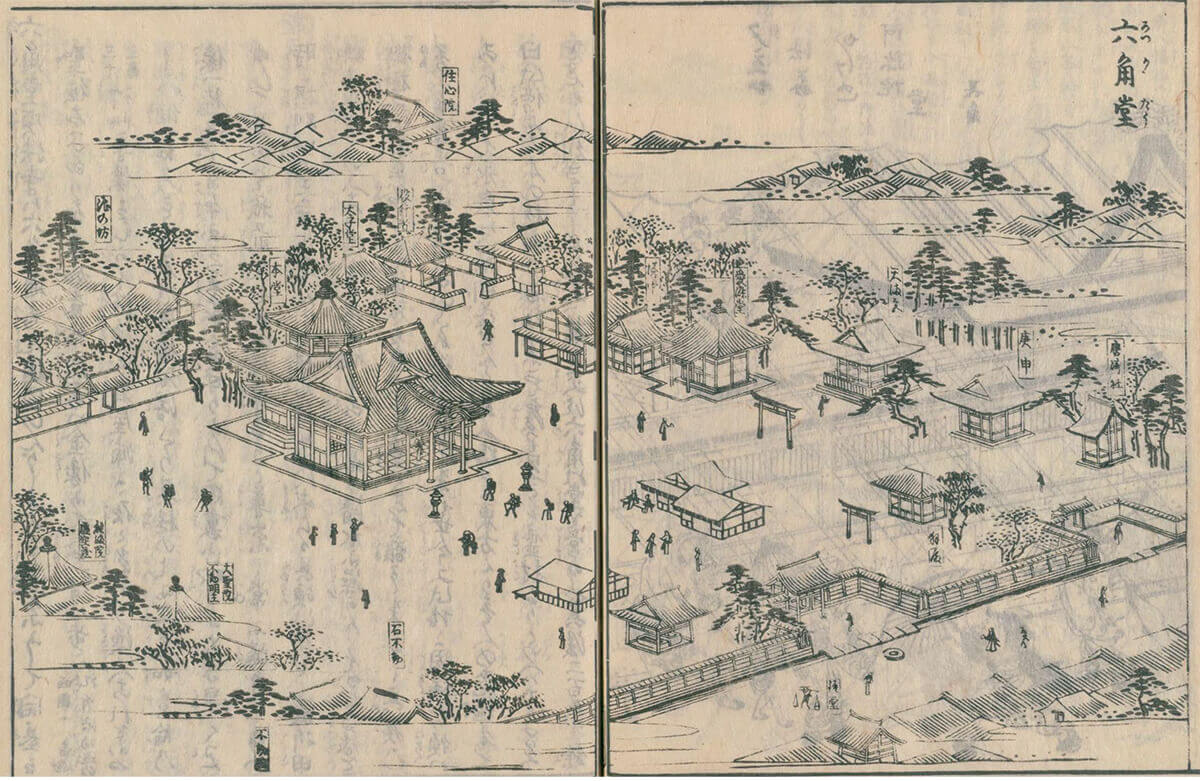
From "Miyako Meisho Zue" (Illustrations of Famous Places in the Capital), vol. 6.
Navel stone" in front of the gate of Rokkakudo
(Digital Collections, National Diet Library)
Besides the fact that this navel stone is said to be the foundation stone of the mainland, there is another episode. In fact,Cornerstone of the water clockThe reason for this is that the
In the past, the city of Kyoto was flooded by the Kamo River,The area was frequently flooded.The navel stone was placed in the center of the pond. A stick is placed in the center of this navel stone, and when the water level rises to the point where the stick is, the user escapes.Guideline for evacuation ordersHe said it was. And.The bell of the bell tower of this temple was rung and people took refuge.
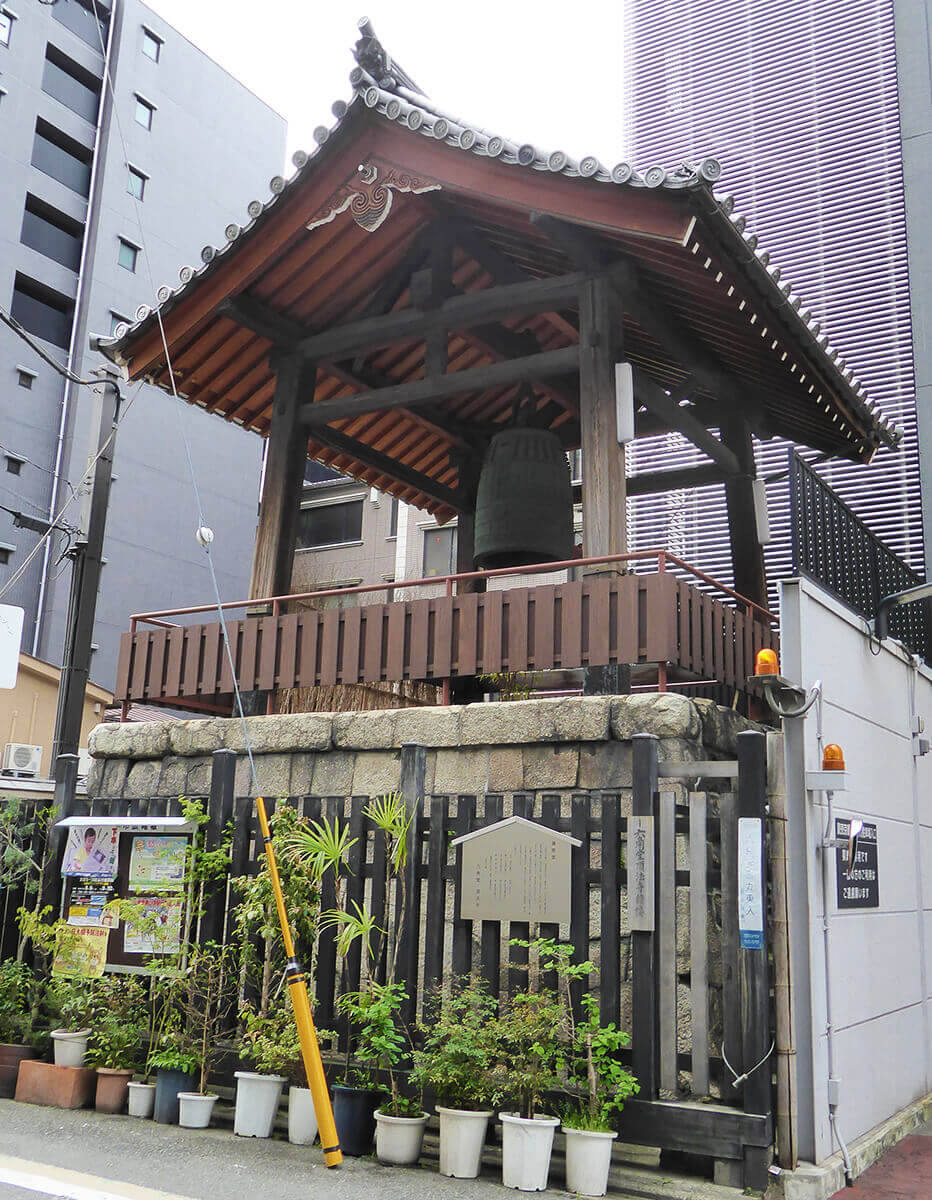
bell of the belfry of Rokkakudo
Edo Period,Rokkakudo is a town hall in ShimogyoandTelling People the TimeThe "bell of the hour" was tolled at a fixed time and played the role of a modern clock, but once a fire, flood, or other calamity struck, the bells would be struck again.Serves as an alarm to warn people of disasters and warfare by ringing a bell.The first thing he did was to fulfill his duty,Indispensable to the people of Kyotowas.
June 10 is the anniversary of the first Emperor Tenchi's building of a funerary clock and striking a drum or bell to announce the time to his people in 671, according to the "Chronicles of Japan. A funerary clock is a water clock introduced from Tang (China). It is said to have been used in Egypt from B.C.
We are told that the bell of Rokkakudo, which is said to have announced time and disasters to the town of Kyoto in the days when there were no clocks, is now in the process of being automated. The "bell of time" reminds us of the changing times. In this day and age when we can tell the time by looking into our cell phones, the bell seems to have outlived its usefulness. However, the bells of Rokkakudo are tolled by human hands at the time of the atomic bombing, on the anniversary of the end of the war, and at the end of the year on New Year's Eve,It continues to resonate its tone deeply in the city of Kyoto and in people's hearts.
Tradition that exists everywhere in the city of Kyoto. It is not just a picture, it is secretly alive in this modern age and continues to coexist with people. The two of Office TO, who previously wrote a series of articles "Kyoto's Demon World Exploration" in the monthly magazine Leaf, explore the mysterious "different" world of Kyoto, which was created over 1200 years. I will unravel the story while actually visiting the place. .
 News
News Feature article
Feature article Featured event
Featured event